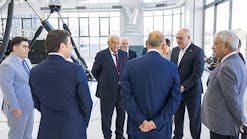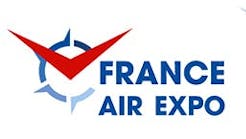Northland President: College Has 'Saddled Up' to Face New Challenges
Nov. 03--Northland Community and Technical College has faced a financial "squeeze" over the past five years as state funding has shrunk, President Anne Temte said Wednesday.
But despite the current "scary times" for the college, including an ongoing Minnesota state budget crisis and a sluggish national and local economy, she said NCTC has handled its recent challenges and now is ready to look forward to a "vibrant, innovative future."
"John Wayne said courage is being scared to death but saddling up anyway, and at Northland, we have saddled up," she said.
Temte and Vice President of Academic and Student Affairs Kent Hanson spoke to a crowd of about 100 at the East Grand Forks campus Wednesday afternoon during the second-annual State of the College event. They'll be at the Thief River Falls campus today.
Less funding
In 2002, state funding paid for about 66 percent of the college's operations while tuition covered the remaining 34 percent. Those two figures have since flipped, with students now covering 61 percent of expenses.
"The burden for higher education has shifted in Minnesota from the state to the students," Temte said. "As this has occurred, we have all wanted to limit the burden on students, so we have not been able to replace state dollars with tuition dollars."
She said that effort has helped NCTC change from the most expensive community college in Minnesota to one that now has "average costs for extraordinary results."
But Temte said the loss of funding also has led to tough decisions, including layoffs and reducing staff sizes while closing and relocating academic programs to save money.
Calming fears
"We have done reorganization and belt-tightening, and we've become much more efficient," she said. "But we know that these kinds of environments breed fear and leadership cannot dispel the fear by just saying, 'Oh, everything's going to be OK.'"
Temte said the college talked with local residents and groups this fall to find out what concerns they have about NCTC and ideas or solutions for the future.
She said one common concern was that the college has a plan to close its Thief River Falls campus, a concern she said simply is not true.
The two campuses merged in 2003, a move Temte said has given the college a "stronger voice" within the 54 campuses in the Minnesota State Colleges and Universities System. It also has helped reduce duplication between the two campuses and offer more programs to the students, she said.
"I assure you that I have no plan other than to strengthen both campuses and to bring new resources to improve them," she said.
Changes
Hanson said it is the "greatest time of challenge" he has seen in his 12 years as an administrator. But he said context matters, and the context NCTC is now in is driven by the loss of $3.5 million in state funding over the past five years.
He said administrators decided last year to take a look at the organization and figure out how to best use its resources, which led to several major changes at both campuses.
The East Grand Forks campus became the home of the college's building trades center, which involved relocating the architecture technology program and eliminating the construction electricity program in Thief River Falls.
Hanson said the architecture program is now full with 20 students and a waiting list, a positive change from the "minimal enrollment" in the past.
Thief River Falls, meanwhile, became the transportation center for NCTC, including aviation technology and the unmanned-aircraft-systems program. The change also involved relocating the automotive technology program from East Grand Forks, a decision Hanson said has also led to a "successful" future for the program.
"All in all, I believe that those restructuring decisions no matter how difficult they were have led us to a point where we can have a foundation for future growth but also continue to serve the region," he said.
During the changes, Hanson said enrollment has remained high.
NCTC had a full-time equivalent of 2,828 students this fall, slightly less than the record set in 2010 of 2,938 equivalent full-time students.
He said the state funding changes have posed a "tremendous challenge" to the college.
"We're definitely up to that challenge," Hanson said. "We've got great faculty and staff and we've got a direction for the future."
Future
Temte highlighted some of the other recent changes, including the college's new UAS maintenance program that will soon graduate its first class of students.
She said 75 students are now enrolled in the aviation program -- a big increase since nine students were enrolled in the "struggling" program four years ago.
NCTC was recently awarded a $5 million grant from the Department of Labor to develop an imagery analyst program to train students to analyze the images streamed from UAS vehicles and interpret them.
And Temte said NCTC has applied for a large grant from the National Science Foundation that would designate the college as a national center for advanced technology education, which would allow the school to make further advancements in cutting-edge technology training.
She said that could lead to integrating UAS technology with law enforcement, agriculture, transportation management and other programs to develop a new generation of education that would keep NCTC at the forefront of the emerging technology.
"It's not good enough in these days to be adequate and to be good," she said. "We need to be exceptional."
Reach Johnson at (701) 780-1105; (800) 477-6572, ext. 105; or send email to [email protected].
Copyright 2011 - Grand Forks Herald, N.D.




